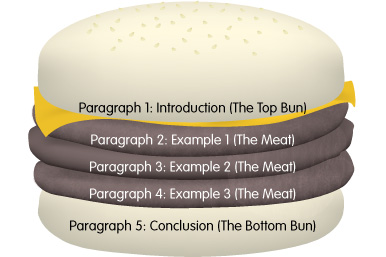If you have already become familiar with the essay format for the TOEFL, then the SAT essay shouldn't be a problem. However, this essay requires a little bit more expertise. Here are some useful tips that I found on the net. The funny thing is that I found one that said 5 tips and the other said 10 tips, but I decided that I am going to copy both :).
Before the tips, I found an excellent explanation that can help you become familiar with the SAT Essay in testpreview.com:
For the essay section of the SAT test, writers are asked to develop a point of view on a particular issue. They must develop this point of view by using evidence, reasoning, and examples based on readings, observations, or their own personal experiences. Each essay question is accompanied by a paragraph about the specific issue, and this paragraph provides important information for the completion of the essay. Each SAT test essay is scored on a scale of one (low) to six (high).
When grading the SAT test essay, there are several things that the essay readers look at. Each of these things must be done well in order to receive a high essay score. The essay readers look at the following: the organization of the essay, that the essay has a clear and well-defined focus, that the essay is coherent and has a smooth and logical progression of ideas, that language is used properly, that there is evidence of an accurate and varied vocabulary, that there is variety in sentence structure, and that the SAT test essay is free or (or has only minimal) errors in usage, mechanics, and grammar. In addition, the main ideas presented in the essay must be supported appropriately and sufficiently using appropriate examples and/or reasons.
10 Tips for the SAT Essay
By Grace Fleming, About.com Guide
1. Follow the rules.Don’t score a zero for failing to follow instructions. Use the essay paper that is provided. Do not write in your booklet. Do not change the question. Do not use a pen.
2. Divide your time.
You will have twenty-five minutes to write your essay. As soon as you begin, make a note of the time and give yourself benchmarks and limits. For example, give yourself five minutes to brainstorm for main points (which will become topic sentences), one minute to come up with a great introduction, two minutes to organize your examples into paragraphs, etc.
3. Take a stance. You will be writing about an issue. Readers judge essays on the depth and complexity of the argument you make (and you will be taking a side), so be sure to show that you understand both sides of the issue you’re writing about. However, you can’t be wishy washy!
You will pick one side and explain why it is right. Demonstrate that you understand both sides, but pick one and explain why it is correct.
4. Don’t get hung up if you don’t actually have strong feelings one way or the other on a subject.
You don’t have to feel guilty about saying things you don’t really believe. Your task is to show that you can craft a complex argument essay. That means you will have to make specific statements about your position and expound upon your individual points. Just take a side and argue it!
5. Don’t try to change the subject.
It may be tempting to change the question to something that is more to your liking. Don’t do that! Readers are instructed to assign a zero score to an essay that doesn’t answer the question provided. If you try to change your question, even slightly, you are taking a risk that the reader will not like your answer.
6. Work with an outline!
Use the first few minutes to brainstorm as many thoughts as possible; organize those thoughts into a logical pattern or outline; then write as quickly and neatly as you can.
7. Talk to your reader.
Remember that the person scoring your essay is a person and not a machine. As a matter of fact, the reader is a trained educator—and most likely a high school teacher. As you write your essay, imagine that you are talking to your favorite high school teacher.
We all have one special teacher who always talks with us and treats us like adults and actually listens to what we have to say. Imagine that you are talking to this teacher as you write your essay.
8. Start with a fabulous or surprising introductory sentence to make a great first impression.
Examples:
Issue: Should cell phones be banned from school property?
First sentence: Ring, ring!
Note: You would follow up on this with well-crafted, fact-filled statements. Don’t try too much cute stuff!
Issue: Should the school day be extended?
First sentence: No matter where you live, the longest period of any school day is the last one.
9. Vary your sentences to show that you have a command of sentence structure.
Use complex sentences sometimes, mid-sized sentences sometimes, and two-word sentences a few times to make your writing more interesting. Also--don’t keep repeating the same point by rewording it several ways. Readers will see right through that.
10. Write neatly.
Neatness counts to some degree, in that the reader must be able to read what you’ve written. If your writing is notoriously difficult to read, you should print your essay. Don’t get too hung up on neatness, though. You can still cross out mistakes that you catch as you proofread your work.
The essay represents a first draft. Readers will like to see that you did, in fact, proof your work and that you recognized your mistakes.
More tips: Click on the links:
Five Tips for Writing a Great SAT Essay
The SAT Essay (very useful indeed)
The SAT Essay: Basic Principles
The Four SAT Essay Ingredients
And remember, practice makes perfect!
See you around!
Eva

